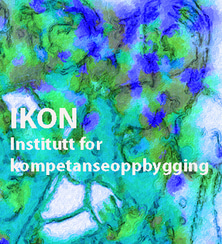Chapter 23
Questions and Answers Regarding Brain Psychology
Since the book on brain psychology encompasses a new understanding of psychological distress, readers may have certain questions. Therefore, the following section contains specific questions and corresponding answers. The answers are summaries of the preceding content. One purpose of this chapter is to describe the significance of sensory representations,words, and statements for the experience of psychological distress and the mental processes that occur when clients undergo psychological change.
How are mentally anchored distresses constructed?
Psychological distress is composed of biopsychic elements that anchor and trigger the emotions experienced in relation to the psychological distress. These biopsychic units consist of four elements: internal sensory experiences, words and statements, emotions, and the biological element that underlies the others.
What is the similarity between psychological distress and ordinary mental states?
The similarities lie in the fact that psychological distress and ordinary mental states are constructed from the same types of mental material, including internal modal elements and words, thoughts, and statements.
What are the causes of mentally anchored distress?
Brain Psychology distinguishes between the externally observable causes and the mental causes of psychological distress, focusing on the mental causes. This is possible because all experiences associated with psychological distress are mentally stored as sensory representations, words, and statements, which constitute mental material in the form of mental elementsthat encompass emotions and are stored in unconscious conscious memory.
The causes of mentally anchored distress are the biopsychic elements that contain psychological pain and with which the client is in contact. Psychological distress is also a result of mental processes that occur based on the biopsychic elements containing psychological pain, leading to further engagement with mental elements, sensory representations, words, and statements that trigger the clients’ symptoms.
What happens mentally inside clients’ minds when they improve from treatment?
The mental changes that lead to clients’ improvement from treatment are a consequence of changes in their interactionwith the biopsychic elements that trigger their emotions. There are two pathways to psychological change. One is the result of changes in the individual’s focus, which involves the client connecting with new biopsychic elements. The other form of change is a result of modifications in the biopsychic elements that have caused and continue to cause the psychological distress. These changes occur due to the mental processes initiated by the therapist’s change-inducing statements. Changesin biopsychic elements that contain intense psychological discomfort can lead to alterations in the individual’s physicaland mental strategies, as well as the development of new strategies that contribute to increased psychological well-being and coping abilities.
Are mentally anchored distresses simple mental phenomena?
Yes, psychological distress is a simple mental phenomenon, even though the client’s statements, emotional reactions, and observed behavior may appear complex from an external perspective. This is because every experience of psychological distress is a result of contact with certain mental elements that trigger the client’s emotions and reactions. This applies to delimited psychological distress and more severe conditions such as psychotic spectrum disorders, including schizophrenia. Therefore, it is sufficient to assess the client’s immediate interaction with biopsychic units to gather enough information about the psychological distress to treat it. There is no need to delve deeper into the client’s history or delveinto-depth psychological experiences to assess and modify the immediate experience of psychological distress. It ispossible to assess the mental processes that lead to psychological distress solely by examining the biopsychic elements that anchor and elicit the client’s emotional reactions and behavior. Although the basic model for psychological distress is simple, the psychological distress itself can still be complex. Simplicity and complexity are characteristics that can coexist in this context. For detailed information, reference is made to the foundational theories of brain psychology.
What happens mentally inside the clients’ minds when they do not improve with treatment?
The lack of psychological change in treatment is caused by the fact that the biopsychic elements that cause and trigger theclients’ psychological distress have not been altered, and the treatment has not led to contact with new positively charged mental elements that promote increased psychological well-being and coping ability.
When do psychological changes occur in Linguistic Brain Therapy (LBT)?
Psychological changes occur immediately in each consultation once the initial focused assessment has been completed andduring the consultation. Psychological changes in LBT result from the mental processes initiated by the therapist’s transformative statements. Each time the client provides a change-affirming response to the therapist’s transformativestatements, a psychological change or shift has occurred.
How many change-affirming statements from clients are there in a 60 to 90-minute consultation?
In the average consultation of Linguistic Brain Therapy (LBT), there are approximately 60 to 90 change-affirming statements from clients. Each change-affirming statement is an indication that a psychological change or shift has takenplace. More extensive psychological changes are often the result of a series of smaller psychological changes.
How many consultations are required to treat the psychological distress?
Focused psychological distress can be addressed within a single consultation. Most psychological distress cases require three to eight consultations. More severe psychological distress may require up to 20 consultations. It is possible that certain mental disorders cannot be treated to a level where clients achieve full functionality. However, all clients can experience some psychological changes in each consultation, provided the client is intellectually receptive and desires change.
Can it be proven that psychological changes occur through Linguistic Brain Therapy, (LBT)?
Psychological changes through Linguistic Brain Therapy can be proven by assessing the client’s emotions and thebiopsychic elements that trigger the client’s emotions before and after an intervention or series of interventions. The difference in the emotions and biopsychic elements that the clients engage with before and after one or more interventions will serve as evidence of the psychological changes that have occurred and the specific changes that have taken place.
What is the client-related reasons for not achieving psychological changes in treatment?
There are several reasons why clients may not achieve psychological changes in treatment. These reasons range from a lack of affirmative signals from clients indicating their receptiveness to or desire for change, methods that fail to establishcontact with the biopsychic elements causing the psychological distress and in need of modification, and methods that do not lead to changes in the biopsychic elements responsible for the psychological distress. Other factors contributing to a lack of mental changes through treatment include skepticism and doubt from the client regarding the effectiveness of the therapy.
What aspects of therapists can hinder clients from im-
proving with treatment?
Several factors can hinder clients from improving with treatment. One cause is the therapist’s lack of understandingregarding how the psychological distress is mentally constructed, resulting in an insufficient grasp of the client’s problem.Another cause is a lack of methods and knowledge regarding modifying the psychological distress and a lack of therapeutic creativity when the treatment stalls. Additionally, the therapist’s failure to examine the mental material that underlies the client’s emotions, relying instead on interpretations of the client’s condition and statements, can impede change. Other factors may include the therapist not taking the client’s statements seriously, intervening against the client’swill, a lack of interest and unfriendliness from the therapist, a failure to listen, and a failure to create a situation where the client is receptive to psychological change. Not being attentive to the client’s progress throughout treatment can alsodiminish the therapist’s ability to adjust their therapeutic style if the treatment is ineffective.
What significance does language have for psychological distress?
Language is the tool that allows clients to convey their experience of psychological pain to the therapist. It is also the most effective tool the therapist can use to modify the psychological distress and assess the psychological changes resulting from the treatment. How the therapist utilizes language in the treatment setting is crucial to achieving the desired outcomes.
What is the clients’ capacity for change and psychological resources, and how extensive are they?
The clients’ capacity for change is extensive and far greater than they realize. Their capacity for change is connected to their ability to feel and express the psychological material they engage with and their desires for the treatment. Other mental resources relevant to psychological change include the clients’ past positive experiences and qualities, their ability to envision a situation better than their current one, and their capability to engage in mental processes based on the therapist’s interventions that lead to changes in the biopsychic elements causing and triggering the psychological distress. Clients possess all the mental resources necessary to reduce their psychological distress.
When does the psychological change occur during the consultation?
Psychological change or a psychological shift occurs every time the client provides a change-affirming signal in response to the therapist’s interventions, and when there is alignment between the client’s statements and emotions. It signifiesthat the client has undergone a mental process that has resulted in a psychological change or shift.
What are the prerequisites for treating mental distress predictably and controllably?
The prerequisites for being able to treat mental distress predictably involve knowing the significance of the biopsychic elements for mental distress. Additionally, one needs knowledge and insight into the theory of linkage for psychologicalchange, the theory of the moment’s significance for mental distress, and the theory of the importance of language for psychological change. It is also necessary to master methods to modify the mental elements, the psychic material causing the mental distress.
How many mentally anchored disorders exist?
Based on the brain-psychological understanding of mental distress, it is more appropriate to operate with single mental distress with as many variations as there are clients, rather than hundreds of mental disorders as conveyed in the international diagnostic systems ICD 10 and DSM V. This assessment is made because all mental distress is a result of conscious or unconscious contact with biopsychic elements that contain emotions and trigger the client’s s y m p t o msand mental distress.
How can one research mental distress as experienced from within?
The only scientifically sound and precise approach to researching the psychic material that anchors and causes mental distress is by examining the sensory perceptions, words, and statements that contain emotions and cause mental distress as experienced by the clients. This requires using methods that enable clients to connect with this material and convey their experiences of mental distress through language. Brain-psychological research can also be used to investigate mental distress. Still, this research requires a theory that can scientifically explain the connection between the findings of brainresearch and the psychic material causing mental distress. Conclusions drawn from brain research about the connection between its findings and mental distress will be flawed if this theory is lacking. Neuropsychological and neurobiological research should consider whether it is more effective to approach certain research questions through a cognitiveperspective rather than neurobiological.
What is the connection between the brain and the subjective experience?
The subjective experience is always the sum of the emotions contained in the mental elements with which clients have conscious or unconscious contact in a particular moment. These mental elements reside in the brain. From a strictlyscientific perspective, it is not possible to separate the subjective from the objective mental-biological processesoccurring in the brain. The subjective experience and the brain are one, even though the brain has far more functions than facilitating mental functioning. Therefore, every subjective experience is an expression of objective states in the brain, and as a result, the subjective aspect, in












philipdammen4@gmail.com
(+47) 94294327
Socials
Contact
Philip Dammen, Dr. Philos
Founder of IKON / researcher, therapist, and emeritus assistant professor in pedagogy at the Norwegian Academy of Music


